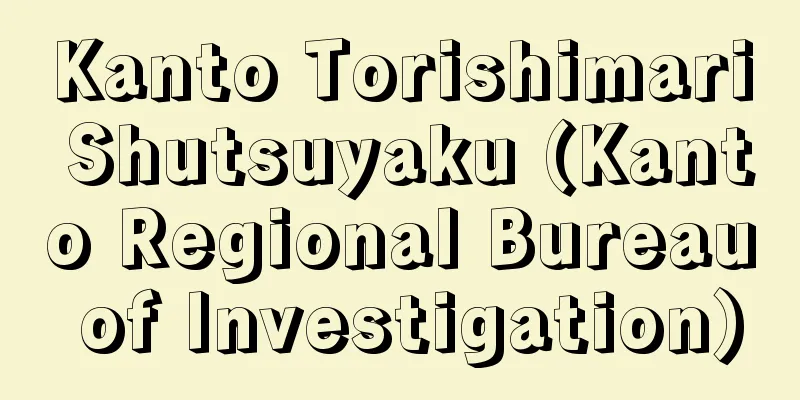Honjo

[1] (also "honsho") 1. In the late Heian and Middle Ages, this refers to the holders of high-ranking positions such as manor lords (honke and ryoke) and kokushi. Initially, it was used to refer to manor lords in contrast to kokushi or kokuga, but after the Kamakura period, with the advancement of samurai power centered on jito, it came to be used as a term to refer to high-ranking positions in general, including kokushi, in contrast to the middle and lower positions below the jito position under the system of positions in the manor and public land system. Main family. Head of the main family. *Chuu-u-ki - March 10, 1097 (Eicho 2) "During the heavy rain yesterday and the day before, the floating bridges on the Yodo River were all washed away. (Omitted) Early orders were made to cross the main house and the provinces ." 2. Original residence. Original address. Main residence. Home province. Also, the place where one should originally be. ※Genji (around 1001-14), Sukunagi: "The people of Honjo were also riding on the carriages going out to the Imperial Palace." ※Jinno Shotoki (1339-43), Vol. 1: "From Shirakawa onwards, Toba Palace was designated as the Honjo of the retired emperor." ③ Kurodo -dokoro . Particularly, the Kurodo-dokoro is a guardhouse at the mouth of the waterfall. Or, a warrior's residence that guards the Imperial Palace. ※Heike (early 13th century), Vol. 10: "He was originally a samurai of Komatsu Palace. He came to Honjo when he was thirteen." ④ A term used to refer to nobles as opposed to samurai. ※Taiheiki (late 14th century), Vol. 24: "The reason for this is that the provincial government offices and manors were not under the control of Honjo." [2] (Remnants of the name Honjo due to the manor system) [1] A general term for the southern part of Sumida Ward in Tokyo, the area that was formerly Honjo Ward. After the Great Fire of Meireki ( 1657 ), it was opened up as residential land for samurai and townspeople, and Higashi-Ryogoku became a red-light district, with the residence of Kira Kozuke-no-suke located in Honjo Hitotsume. [2] One of the 35 wards of Tokyo City. Located on the east bank of the Sumida River, it was established in 1878 ( Meiji 11 ). In 1947 ( Showa 22 ), it merged with Mukojima Ward to form Sumida Ward. [3] The name of a place in the southwestern part of Sumida Ward, Tokyo.Hon-zo [Honjo]Source: The Selected Edition of the Japanese Language Dictionary About the Selected Edition of the Japanese Language Dictionary Information |
[1] (「ほんしょ」とも)① 平安末期・中世、荘園領主(本家・領家)や国司などの上級諸職所有者をさす。当初は国司あるいは国衙に対比して荘園領主をさす用語としてもちいられたが、鎌倉以降、地頭を中心とする武家勢力の進出にともない、荘園公領制の職の体系下における地頭職以下の中下級諸職に対比して、国司を含めた上級諸職一般をさす用語としてもちいられるようになった。本家。本主。※中右記‐永長二年(1097)三月一〇日「昨日一昨日大雨之間、淀川浮橋皆流損了〈略〉早仰二本所一、課二国々一可レ令二構渡一」② 本来の居所。もともとの住所。本居。本国。また、本来あるべき場所。※源氏(1001‐14頃)宿木「又御むかへの出し車どもに本所の人々のせてなんありける」※神皇正統記(1339‐43)上「白河よりのちには鳥羽殿をもちて上皇御坐の本所とは定められにけり」③ 蔵人所(くろうどどころ)。特に蔵人所に属する、滝口の詰所。または、院の御所を警衛する武者所。※平家(13C前)一〇「もとは小松殿の侍也。十三のとし本所へまいりたりける」④ 武家に対して公家をいう語。※太平記(14C後)二四「其の故は国衙・庄園も本所の知行ならず」[2] (荘園制度による本所の名残)[一] 東京都墨田区南部、旧本所区にあたる地域の総称。明暦の大火(一六五七)以後武家町人の宅地として開け、東両国は盛り場となり、本所一ツ目には吉良上野介邸があった。[二] 東京市三五区の一つ。隅田川の東岸にあり、明治一一年(一八七八)発足。昭和二二年(一九四七)向島区と合併して墨田区となる。[三] 東京都墨田区南西部の地名。
ほん‐ぞ【本所】出典 精選版 日本国語大辞典精選版 日本国語大辞典について 情報 |
Recommend
Aran [Islands] - Aran
Three islands located at the mouth of Galway Bay o...
Chateaubriand, François-René, vicomte de
Born: September 4, 1768, Ille-et-Vilaine, Saint-Ma...
Food currency - Shokka
〘Noun〙 (From "Book of Documents - Hong Fan&qu...
Arai Inn - Arai Inn
…The remains of Arai Barrier are the only survivi...
Shozo Inoue
Year of death: December 14, 1886 (Meiji 19) Year o...
Ashirabyoushi - Ashirabyoushi
... The music style of the flute can be considere...
Income distribution
This is a method of observing how income is distr...
Udakopasparshana - Udakopasparshana
…Ritual baths have been discovered in the ruins o...
Colombe, Michel
[Birth] 1430. Burgundy Died: 1512. Tours A represe...
Continental law
Refers to the law of continental Europe, such as ...
Agricultural Modernization Fund Subsidy Law
A law enacted in 1961 that stipulates that the nat...
Kujawiak (English spelling) [Poland]
A type of Polish folk dance. It is named after the...
Multipurpose dam - tamokutekidamu (English spelling) multipurpose dam
The purposes of dam construction include flood co...
Eicosapentaenoic acid
An unsaturated fatty acid, oily liquid. It is abb...
Kikugawa [town] - Kikugawa
A former town in Ogasa District, southern Shizuoka...









